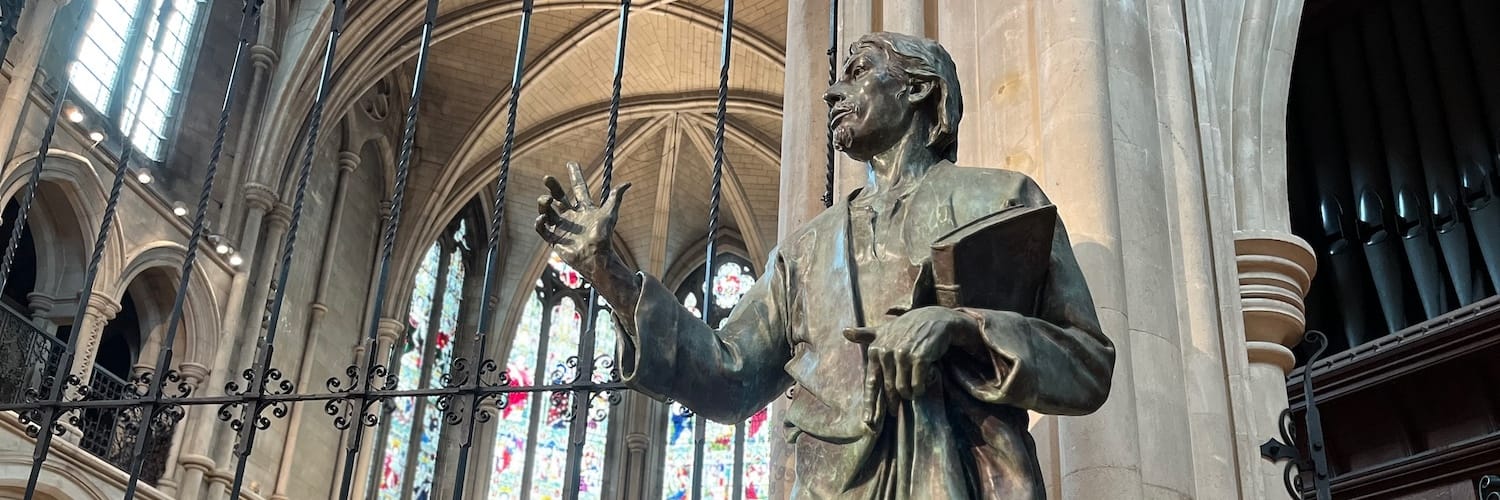
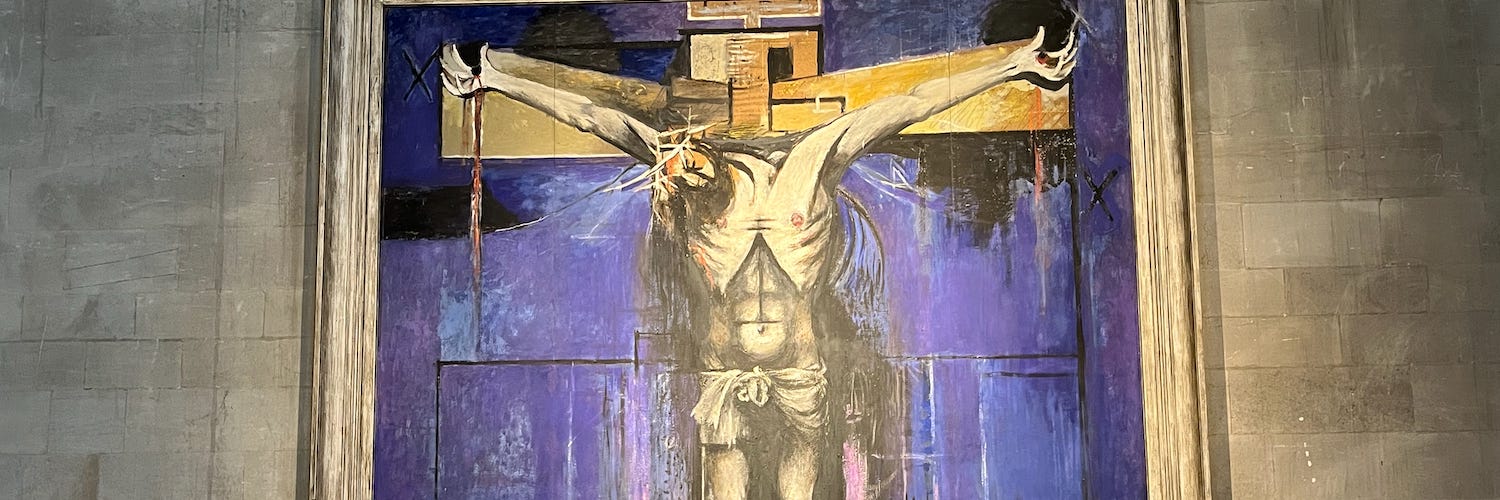
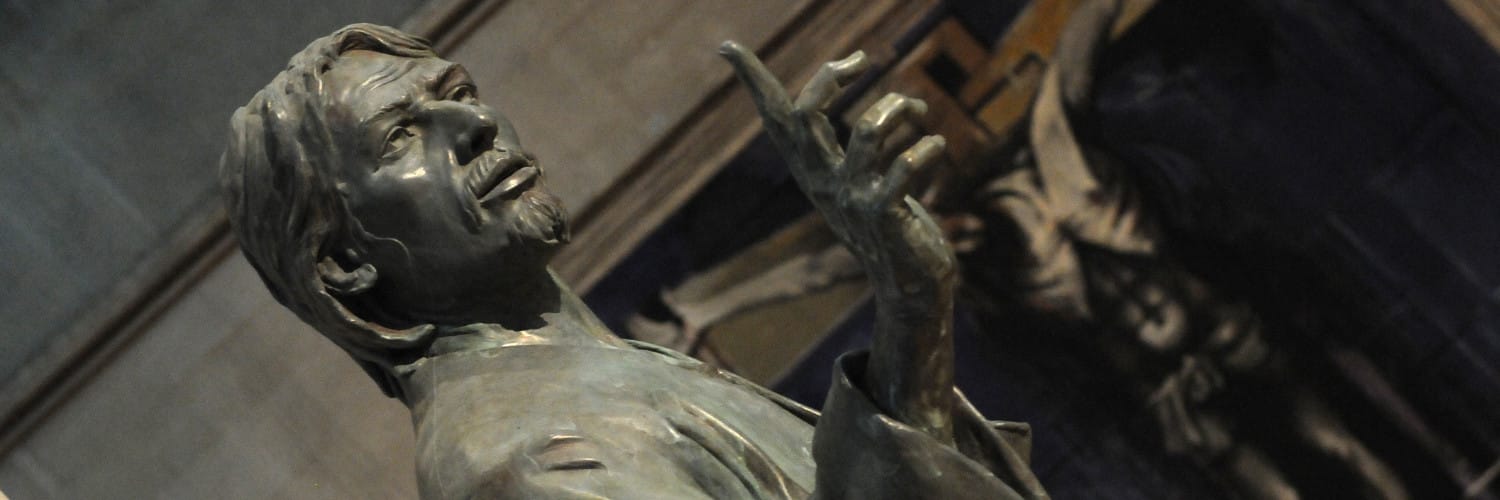
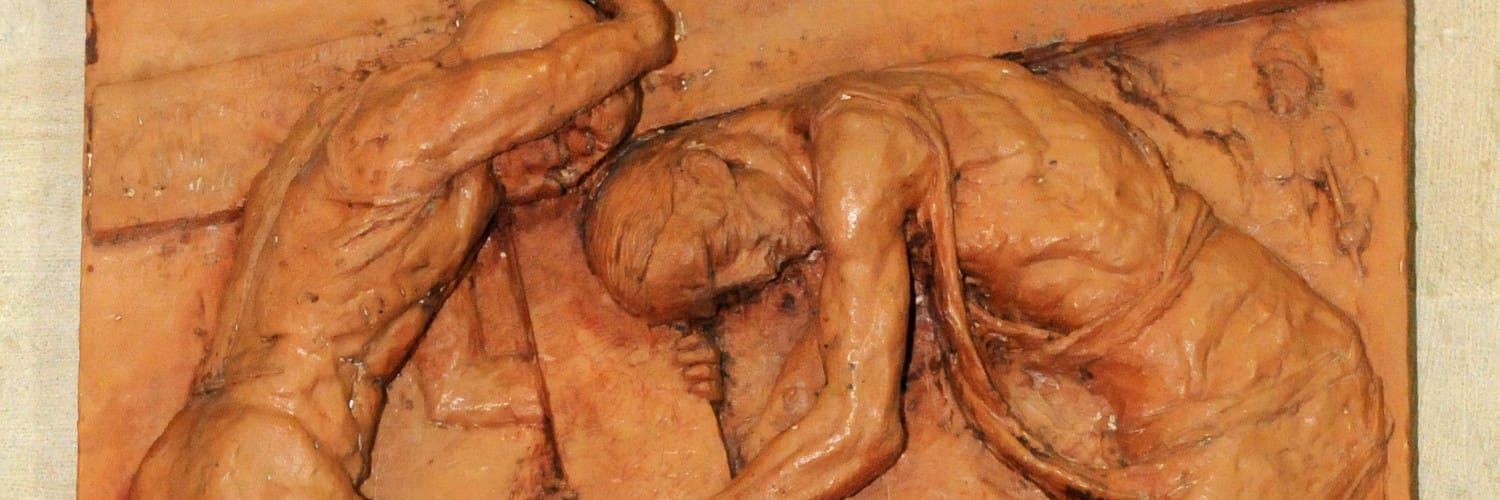
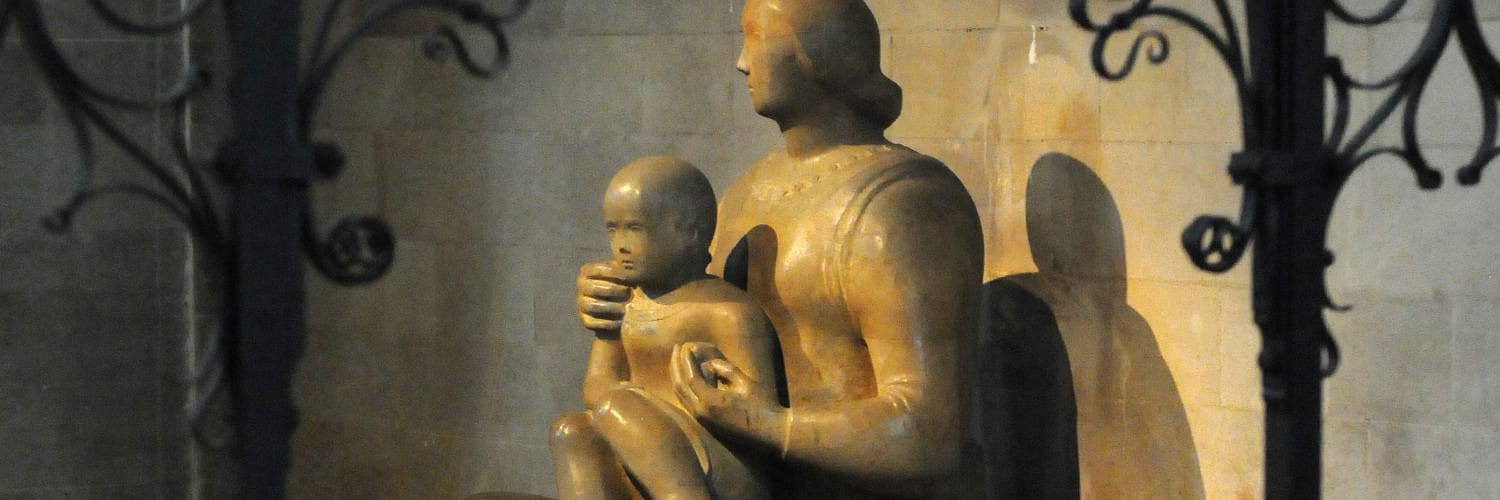
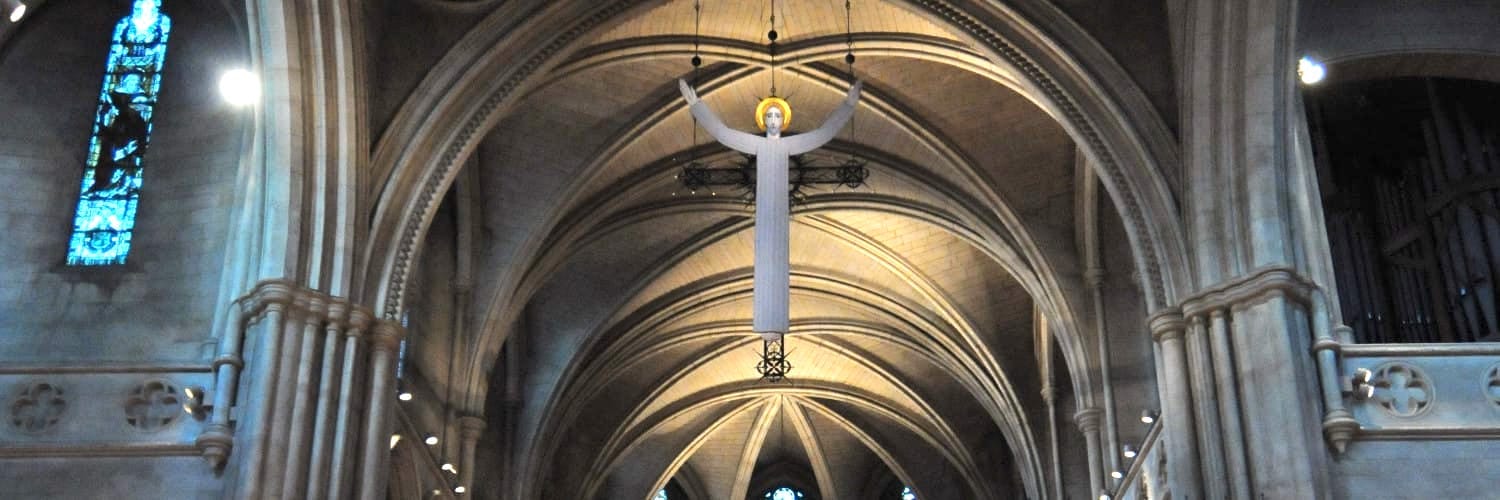
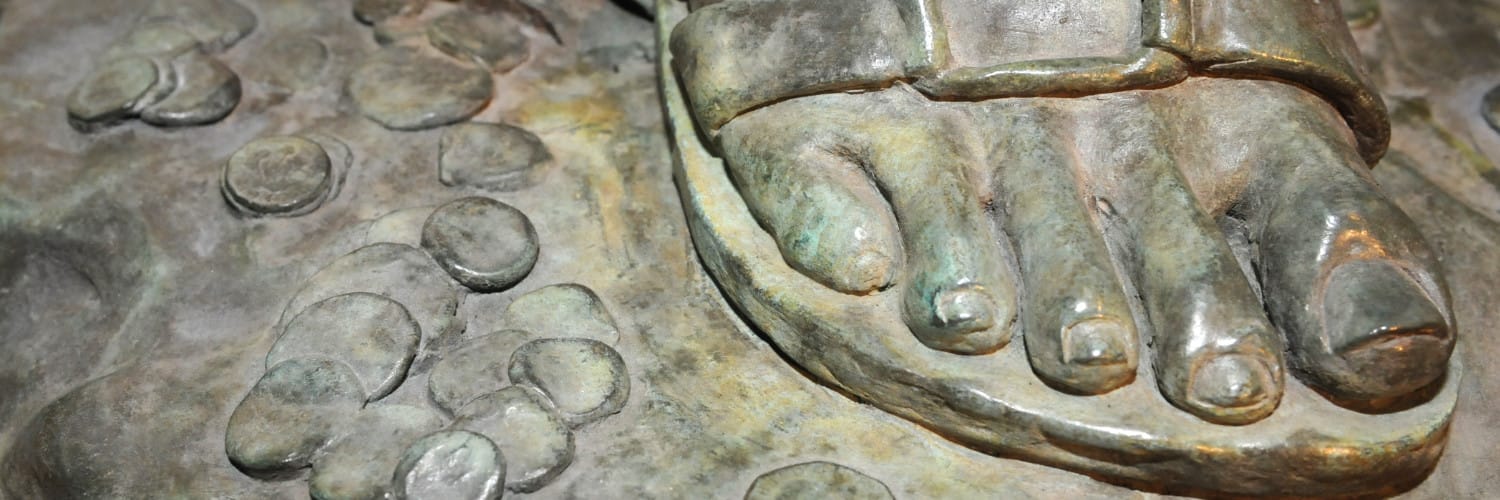
Art & History - St Matthew
Inscribed 21 September 2009
Figure 2m (6'7") Plinth H79 W79 D64 cm Overall height 2.79m (9'2")
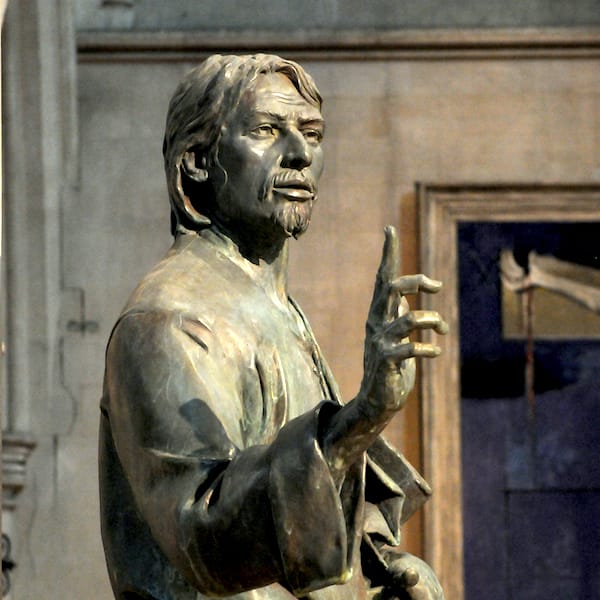
This life-size bronze sculpture of St Matthew, our titular saint, is the most recent artistic addition to the church. It stands on a
plinth constructed of Italian Nabresina Marble.
The work was commissioned from Ian Rank-Broadley (b 1952) one of the foremost sculptors working today. His effigy of H M Queen Elizabeth II
appears on all UK and Commonwealth coinage since 1998. In 2007 he completed work on one of the most important war memorials since
World War II, the Armed Forces' Memorial at the National Memorial Arboretum, containing two large works by Rank-Broadley as part of
its centrepiece. Further examples of his work may also be found in the Supreme Court, The All England Lawn Tennis Club, Wimbledon, St Paul's
Cathedral and Westminster Abbey.
The commission to create an image of St Matthew was made possible by a benefaction from the estate of the late Canon John Morton,
Vicar of St Matthew's 1975-1996, given specifically for this purpose, and by the generosity of parishioners who purchased a
limited edition of ten bronze maquettes.
The sculpture itself was dedicated at a special Sung Mass on St Matthew's Day 2009 in the presence of the Morton family. The
preacher on that occasion was Canon Martin Warner, then Treasurer of St Paul's Cathedral, London, and recently translated from the
bishopric of Whitby to the See of Chichester.
About the Sculpture
As an apostle, St Matthew was commissioned and sent by Christ after his resurrection to proclaim the Good News, to teach and embody the new life
offered by him to all who respond in faith. An apostle points the way to Jesus. In like fashion, from a liturgically sensitive position on the
south side of the nave sanctuary, the sculpture selflessly directs the worshipper's attention toward the nave altar where week by week the risen
Christ is made present in the outward signs of bread and wine. St Matthew is thus a stimulus to prayer and reflection rather than an unhelpful distraction.
Viewed from the nave, the sculpture restores an equilibrium with the alabaster and marble pulpit on the north side. The colour of the bronze is
a mid tone between the pale Bath Stone of the interior and the black ironwork of the Quire screen. The St Matthew sculpture may profitably be
viewed in relief against these backgrounds from a radius of almost 180 degrees. Rank-Broadley has carefully taken account of the environment
afforded in St Matthew's.
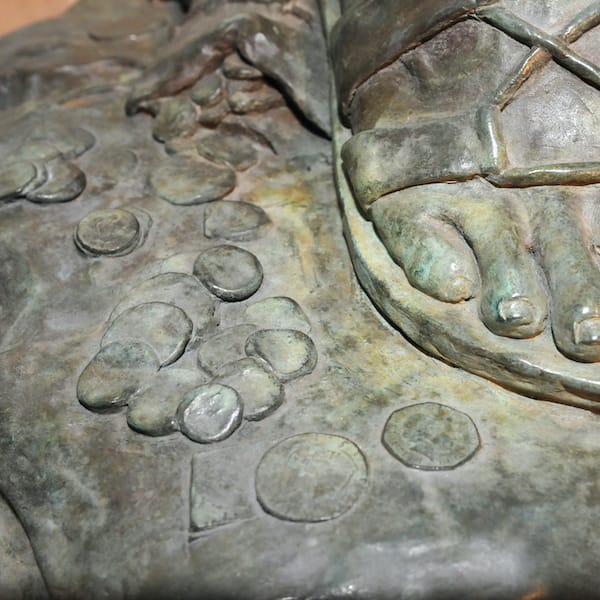
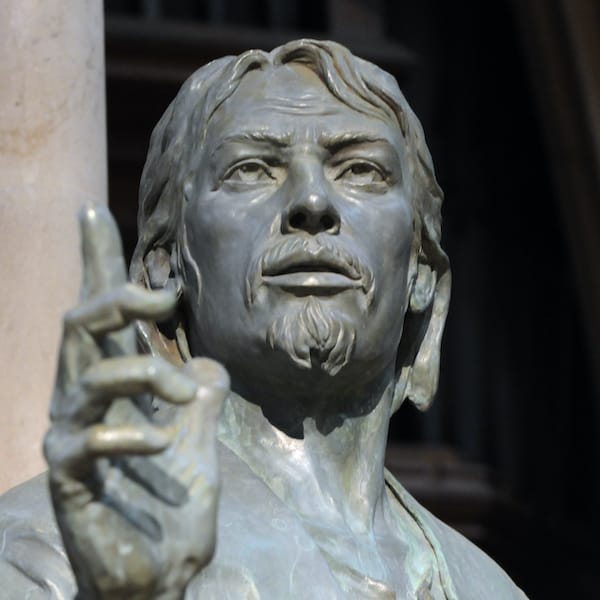
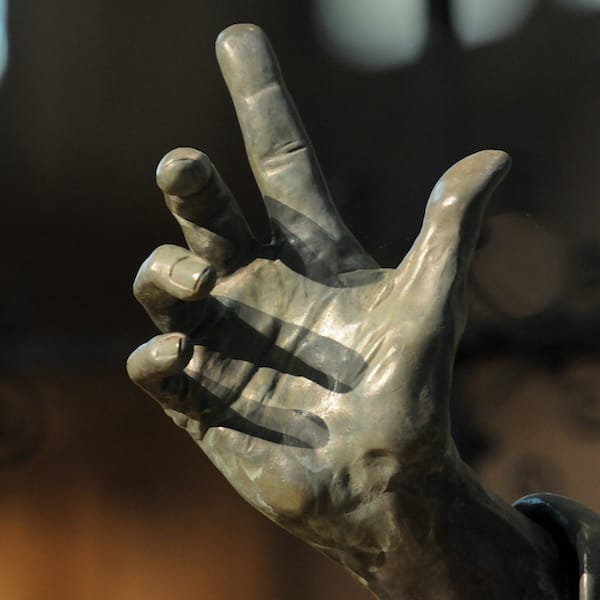
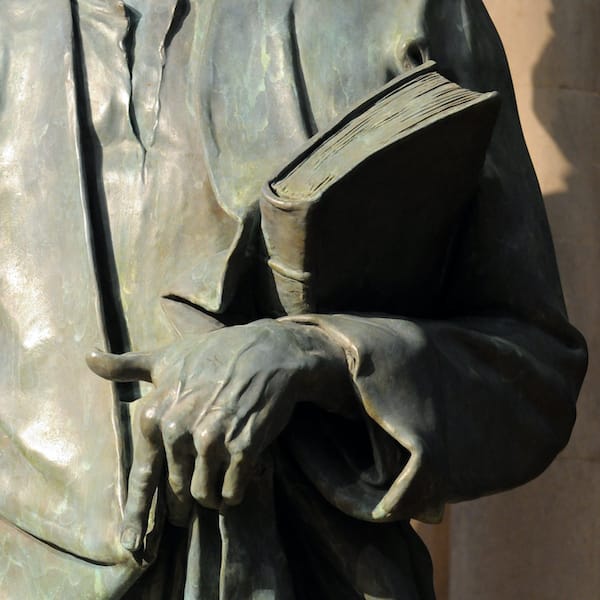
His work is, perhaps, controversially traditional, though being of the highest quality is fully worthy of its environment. There is a wonderful
sense of movement and life in both Matthew's pose and gesture. Simply dressed, he is shown in the open air, the breeze catching his clasped robe,
the folds changing with the light. The underlying bone structure of the face is Semitic. He gestures with his right hand, as if in animated
discussion, whilst under his left arm he holds an admittedly unhistorical bound book of the scriptures, the conventional sign in Christian art
denoting an evangelist.
Matthew is the former tax collector turned disciple. This occupation was despised by his fellow Jews as a betrayal to the occupying Roman force.
Christ ate with Matthew and his friends, scandalizing those around him. Matthew followed at his call and this was enough for Jesus, for he had
drawn someone back to God. He was forgiven, acceptable, and received.
Matthew's right heel bears down on a discarded money bag. Various coins are strewn on the ground; among them may be found impressions of the
pre-decimalization coinage. Together these symbolize the former life left behind.
Matthew was a man with a past who knew his need of forgiveness and acceptance, and experienced first hand the gift of Christ's affirming
call to follow him. The sculptor has caught something of these experiences. There is strength of purpose and sensitivity, dignity without loss
of humility, a hint of what we may become when we respond in faith, hope and love.
Information Quick Links
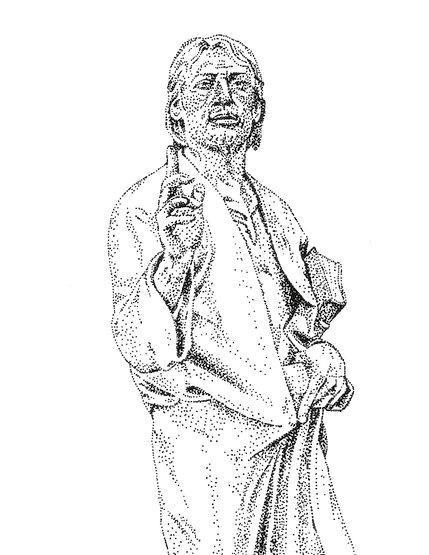
Join our Mailing List
To receive our email newsletter regarding the latest news and upcoming events at St Matthew's, kindly provide us with your name and email address below. By opting in and subscribing, you'll stay informed about our community, special services, insightful articles, and other valuable content.
Connect with us
Please show your support by following and subscribing to our church and choir social media channels, where you can find inspiring content, updates on our events and services, live streamed services, and uplifting messages.







